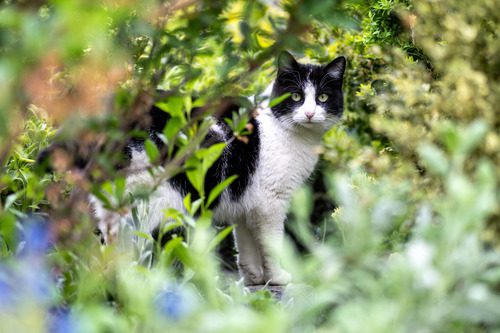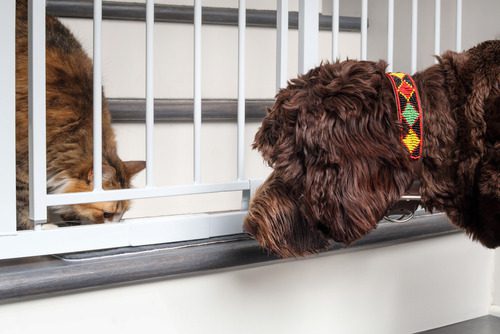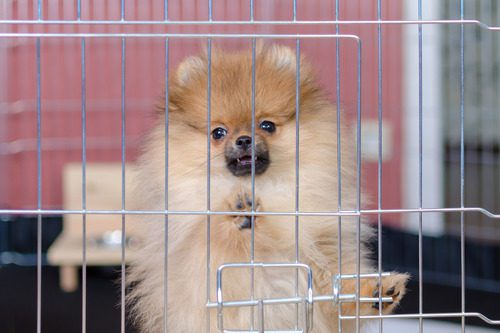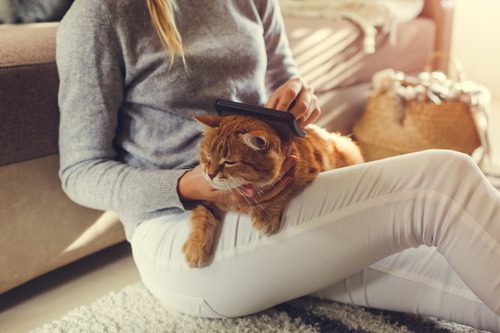Creating a Cat-Friendly Garden: Tips for Safe Outdoor Spaces
Spending time outdoors can be a wonderful experience for cats, especially those who enjoy fresh air, sunshine, and the thrill of watching birds flutter by. However, not every garden is a safe haven for your feline family member. Many common plants can be toxic to cats, and some landscaping choices could expose them to unnecessary risks. If you’re planning to design a garden where your cat can safely explore, relax, and engage their senses, it’s important to choose features and flora with care. In this blog, we’ll walk you through how to create a cat-friendly garden with a strong focus on outdoor plants safe for cats.

Why Garden Safety Matters for Cats
Letting cats enjoy the outdoors—whether in a fully enclosed catio or a supervised backyard—can greatly enhance their quality of life. That said, outdoor spaces need to be thoughtfully planned. Cats often nibble on grass and plants, and if your garden includes toxic species, it could lead to digestive upset or worse.
Creating a garden that’s both stimulating and safe means being intentional about the plants you select, the layout of the space, and the types of materials used. It also means understanding the behaviors that make cats curious, such as digging, chewing, climbing, and hiding. By addressing these tendencies, you can shape an outdoor environment that supports their natural instincts without compromising their health.
Outdoor Plants Safe for Cats
Plant selection forms the foundation of a cat-friendly garden. You’ll want to use only outdoor plants safe for cats to avoid accidental exposure to toxic species. Fortunately, there are many beautiful and pet-safe options available.
Non-Toxic Plants to Include
Here are several popular outdoor plants safe for cats that can add texture, color, and interest to your garden:
- Catnip (Nepeta cataria): A garden favorite among felines, catnip stimulates playfulness and relaxation. It grows easily and attracts pollinators, too.
- Cat Grass (Dactylis glomerata): Often a mix of oat, barley, or wheatgrass, cat grass helps cats with digestion and satisfies their urge to chew.
- Spider Plant (Chlorophytum comosum): This hardy, non-toxic plant is safe for cats and easy to maintain in outdoor pots or hanging baskets.
- Marigolds (Calendula officinalis): Not only are marigolds safe for cats, but they also offer natural pest-repellent properties and bright pops of color.
- Basil, Sage, and Rosemary: These herbs are all outdoor plants safe for cats and can thrive in planters or garden beds. They also offer culinary value for you!
Plants to Avoid
While curating your garden, steer clear of any plant that appears on toxic plant lists for cats. Common outdoor plants that are not safe for cats include:
- Lilies (especially Easter, Asiatic, Day, and Tiger lilies)
- Foxglove
- Oleander
- Azaleas and Rhododendrons
- Daffodils and Tulips (bulbs are especially dangerous)
- Sago Palm
Always verify whether a plant is safe before adding it to your garden. The ASPCA maintains a comprehensive list of toxic and non-toxic plants for pets, which can serve as a helpful reference.
Designing a Safe and Enriching Outdoor Space
In addition to choosing the right plants, the layout and elements in your garden also influence how safe and enjoyable it is for your cat.
Shade and Shelter
Cats appreciate spaces where they can nap in comfort and hide if they feel overstimulated. Include shady spots by using:
- Large planters with safe, leafy plants
- Shade cloths or pergolas
- Outdoor pet shelters or covered cat houses
These areas not only keep your cat cool during warm weather but also provide security and comfort.
Safe Surfaces and Boundaries
Avoid using sharp-edged mulch, chemically treated wood, or pesticides in your garden. Instead, choose natural materials like untreated cedar chips, stone pavers, or smooth bricks. These are gentler on paws and more eco-friendly.
If your yard isn’t fully enclosed, consider installing cat-proof fencing or a dedicated catio. This ensures your cat stays safely within your yard while still enjoying the outdoors.
Cat-Friendly Enrichment Ideas for the Garden
Cats thrive when their environments include elements that engage their senses and allow for natural behaviors. Even in a small outdoor space, you can incorporate features that support mental stimulation and physical activity.
Vertical Spaces
Climbing is an instinctive activity for cats. To encourage safe climbing outdoors, try adding:
- Sturdy shelving or platforms mounted to fences
- Cat trees made from weather-resistant materials
- Driftwood or large branches secured in the soil
Make sure all climbing structures are stable and free from sharp edges.
Hiding and Resting Spots
Include spots where your cat can tuck away or lounge in peace. Options include:
- Large pots turned on their sides
- Soft outdoor beds in shaded corners
- Small tents or pop-up shelters
These cozy nooks provide important opportunities for rest and stress relief.
Sensory Experiences
Many outdoor plants safe for cats stimulate their senses. Lavender, for example, offers a calming aroma. Lemongrass can spark curiosity, and mint gives off a refreshing scent (although some cats may be indifferent to it).
You can also hang wind chimes, add water fountains, or use rustling ornamental grasses to create a multi-sensory environment. Just make sure each item is pet-safe and securely anchored.
Avoiding Hazards in the Garden
As peaceful as a garden may seem, several hidden dangers could put your cat at risk. Being proactive about these hazards helps keep your outdoor space safe.
Chemical-Free Gardening
Avoid using fertilizers, herbicides, or pest repellents that aren’t clearly labeled as pet-safe. Even small amounts of residue can be harmful if your cat licks their paws or chews grass after application.
Instead, look into organic options, physical barriers for pest control, or companion planting methods to protect your garden naturally.
Watch for Wildlife and Insects
Outdoor spaces naturally attract other creatures—from butterflies to squirrels to bees. While most of these visitors are harmless, some may pose risks. Keep an eye out for:
- Bees and wasps (risk of stings)
- Toads (some species secrete toxins)
- Rodents (which may carry disease)
- Snakes (especially in rural areas)
If your cat enjoys supervised outdoor time, stay nearby and monitor their behavior to minimize interactions with potentially dangerous wildlife.
Making Your Terre Haute Garden Cat-Ready
Creating a cat-friendly garden takes time, but the payoff is well worth the effort. By focusing on outdoor plants safe for cats, incorporating enrichment features, and avoiding common hazards, you’ll give your feline a stimulating and secure outdoor space they’ll love. Whether you’re planting a full backyard oasis or curating a cozy patio garden, even small changes can make a big difference.
If you have questions about which outdoor plants are safe for cats or need advice on cat-proofing your yard, the team at Brown Veterinary Hospital in Terre Haute, IN is happy to help. Call 812-645-0715 or book an appointment online to chat with us about your cat’s outdoor lifestyle and how to support their safety every step of the way.
Recent Posts
About Brown Veterinary Hospital
We are here to serve as your partner in keeping your four-legged family member healthy, ensuring you have all the tools you need to provide them with a lifetime of outstanding care. Our animal hospital in Terre Haute offers a full range of services to nurture and extend your pet’s life, from wellness and preventative care to critical care, exotic pet care, and dermatology.





